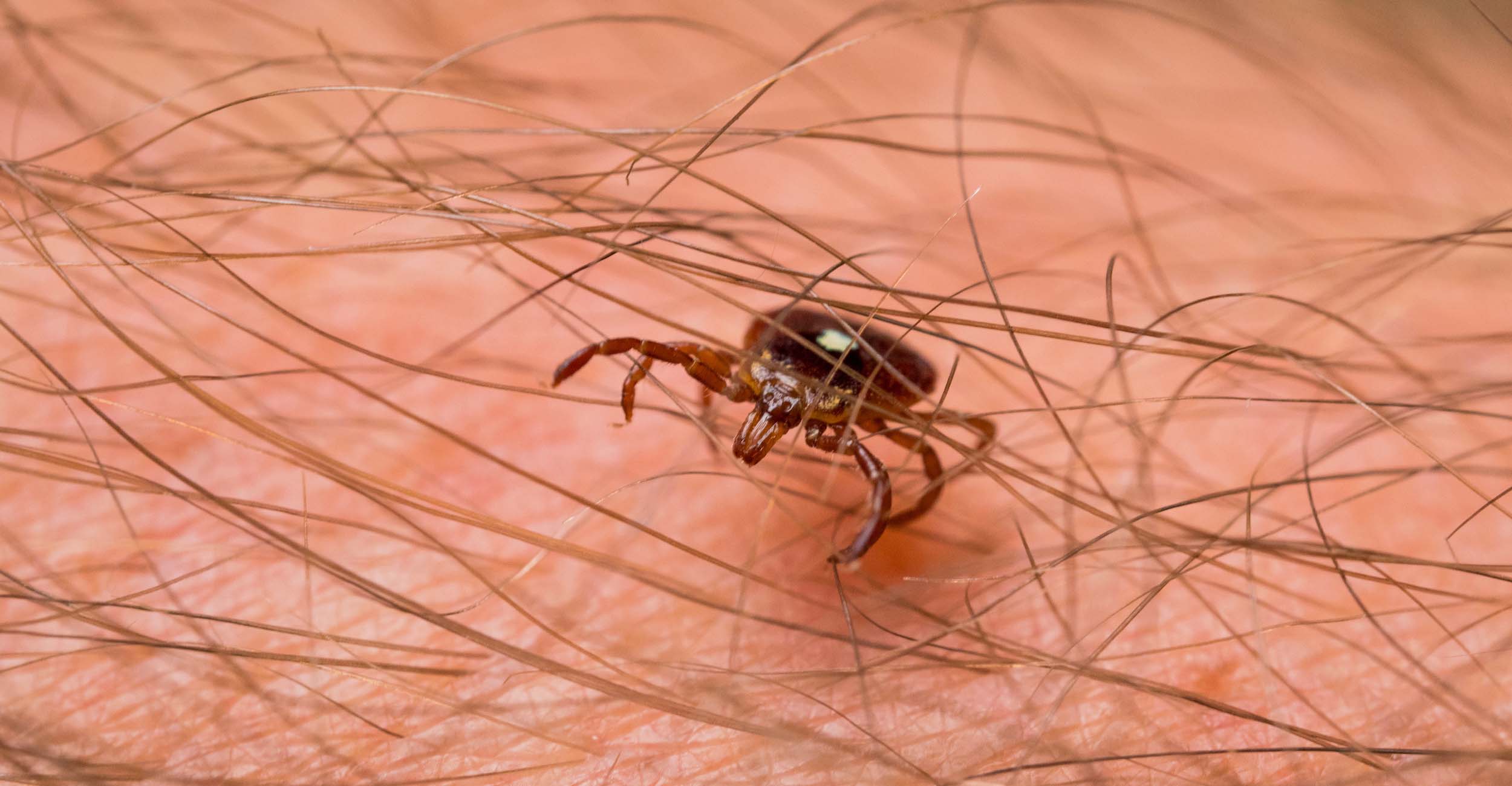
How to treat a tick bite and when to see a doctor
Tuesday, June 7, 2022
Media Contact: Gail Ellis | Communications Specialist, Copywriter | 405-744-9152 | gail.ellis@okstate.edu
It’s the season of ticks, and while most Oklahomans know how to ward off the creepy crawlers, tick bites are a common occurrence that can cause serious health implications.
Justin Talley, Oklahoma State University Extension livestock entomologist and head of the OSU Department of Entomology and Plant Pathology, said the reproductive cycle of ticks becomes more prolific when temperatures and humidity levels rise. To avoid ticks during the summer months, he recommends applying a bug spray or other natural substance, such as clove or peppermint oil, around the ankles and waistline.
In both heavily wooded areas and tall grass, wear long sleeves and pants, tuck pant cuffs into socks and apply a repellant to avoid the risk of tick bites.
But what if a tick is discovered and still attached? Wes Andrews, M.D. and chief of staff for OSU University Health Services, offers the following medical advice:
- Use tweezers and pull gently to retrieve the whole tick, including the head and mouth parts.
- Do not apply any kind of chemical to the tick before attempting to remove it, including nail polish, Vaseline or a lit match.
“The thought is the chemical will smother or kill the tick, but that’s generally discouraged because of the risk involved with chemicals,” Andrews said. “Careful extraction with tweezers is best.”
If the tick is not entirely removed, a person should seek medical attention at a clinic or urgent care where a medical professional can properly remove the tick after numbing the affected area.
“It’s so important to get out all the mouth parts because that’s where the saliva is and where viruses and infections spread,” Andrews said.
Frequently, tick bites will itch or cause redness, but those reactions are not necessarily signs of infection. These symptoms often represent a brief allergic irritation from the bite. If the area is smaller than a quarter, concern is low, but if the area becomes larger than a saucer, seek medical attention.
Although ticks are most often associated with spreading Lyme Disease, Andrews said the disease is not prevalent in Oklahoma. Deer ticks that carry Lyme Disease thrive more in the northeast and Great Lakes areas in cooler summer temperatures.
Most infections or conditions resulting from tick bites in Oklahoma are:
- Rocky Mountain spotted fever — bacterial disease that causes fevers, headaches and a rash
- Ehrlichia — bacterial disease that causes flu-like symptoms
- Alpha-gal syndrome — food allergy to red meat
“The most common infection we see is Rocky Mountain spotted fever, but Alpha-gal syndrome is definitely on the increase as we learn to recognize it,” Andrews said. “When a tick bites, it causes an immune reaction that creates a sensitivity to some of the antigens found in red meat. Testing for it is more available now than it was 10 years ago.”
Fever, body aches, sweats, chills and other flu-like symptoms are associated with these diseases. Andrews said a rash usually appears after Rocky Mountain spotted fever has progressed to a serious state.
“If someone feels like they have the flu during the summer, it may be tick-related,” he said. “There’s a lot of illness out there that can create flu-like syndromes. Getting evaluated is important.”
OSU Extension provides additional information on the different types of ticks and tick-borne diseases.
